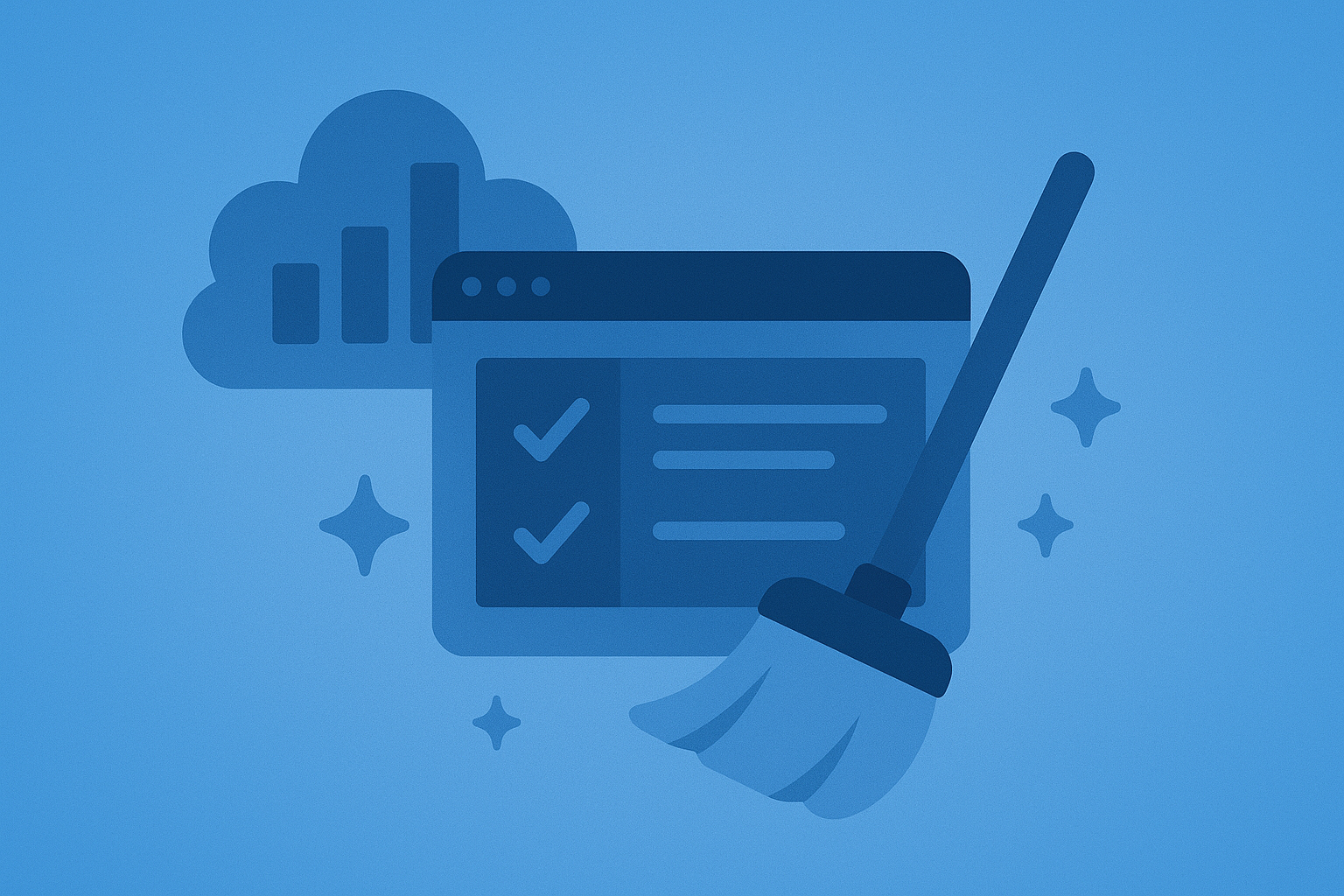

If your HubSpot feels messy, it’s not HubSpot’s fault. It’s the data.
Bad data breaks reports, automations, and trust. It makes your team question the numbers and slows every decision.
The good news: fixing it isn’t hard. You just need a system.
Here’s how we helped one SaaS company clean 39,000 messy contacts down to 13,000 verified ones, and how you can do it too.
A messy HubSpot doesn’t just look bad. It wastes time and money.
Here’s what we usually find in broken CRMs:
Each of these kills your reports and automations.
Clean data isn’t about perfection. It’s about making decisions you can trust.
Before cleaning, decide what “clean” means for your business.
Ask yourself:
For one SaaS client, our goal was simple:
Make HubSpot accurate, organized, and ready to automate, without losing a single lead.
Your “why” shapes your cleanup plan.
Don’t clean data in pieces. Bring it all together first.
We exported nearly 39,000 contact rows: duplicates, blanks, inconsistencies. Once it was all in one sheet, the patterns became obvious.
Centralizing gave us clarity. And clarity turns chaos into progress.
Most people start deleting. That’s a mistake.
Start by standardizing first.
Here’s our step-by-step checklist:
Emails
Phone Numbers
Addresses
Names
Once the data is consistent, merging duplicates becomes safe and easy.
A missing email isn’t the real problem. It’s a broken process.
Example: HubSpot’s State/Region field allows free text. That means dozens of versions of the same thing — “CA,” “California,” “Calif.”
The fix: switch it to a dropdown.
Now everyone uses the same values, and reports stay accurate.
Other simple fixes:
Good data starts with good structure.
This step reduced our client’s data from 38,889 to 13,064 trusted records.
We grouped by email, phone, name, and company. Then:
The goal isn’t perfection. It’s trust.
When your team trusts the CRM, they use it.
You don’t need to spend weekends in spreadsheets.
Here are the tools that do the heavy lifting:
Let the tools do the cleaning so you can focus on growing.
The smartest companies don’t keep cleaning. They prevent messes.
Use HubSpot workflows or Operations Hub automations to:
As my tech lead Chris says,
“Clean once, then let automation handle it from there.”
Think of CRM hygiene like brushing your teeth. Skip it, and things rot.
Do this:
Clean data compounds over time.
Here’s our repeatable process for every SaaS client:
Standardize – unify formats across all systems
Enforce – add validation and required fields
Deduplicate – merge cleanly and preserve key data
Maintain – schedule audits and automations
It’s simple, scalable, and works every time.
One of our clients, EquipmentShare (a Series E construction SaaS), had a CRM on life support.
In 4 weeks, we:
The result: reps trusted the data again, reports became accurate, and leadership could finally forecast with confidence.
When your data is clean, everything speeds up:
Clean data isn’t optional. It’s what makes HubSpot work.
If your HubSpot feels messy, we’ll show you what’s wrong and how to fix it.
We run a free HubSpot Data Audit every month for SaaS founders who want clarity.
We’ll find hidden issues, clean them up, and show you how to keep it that way.